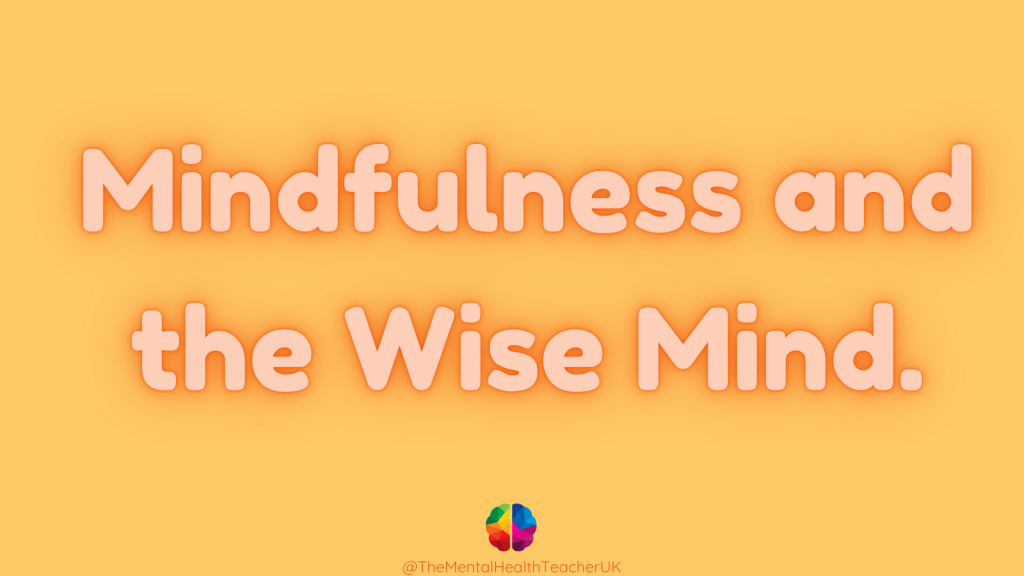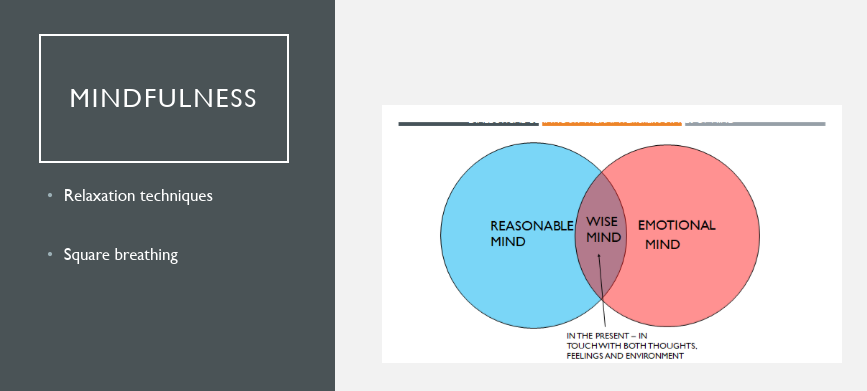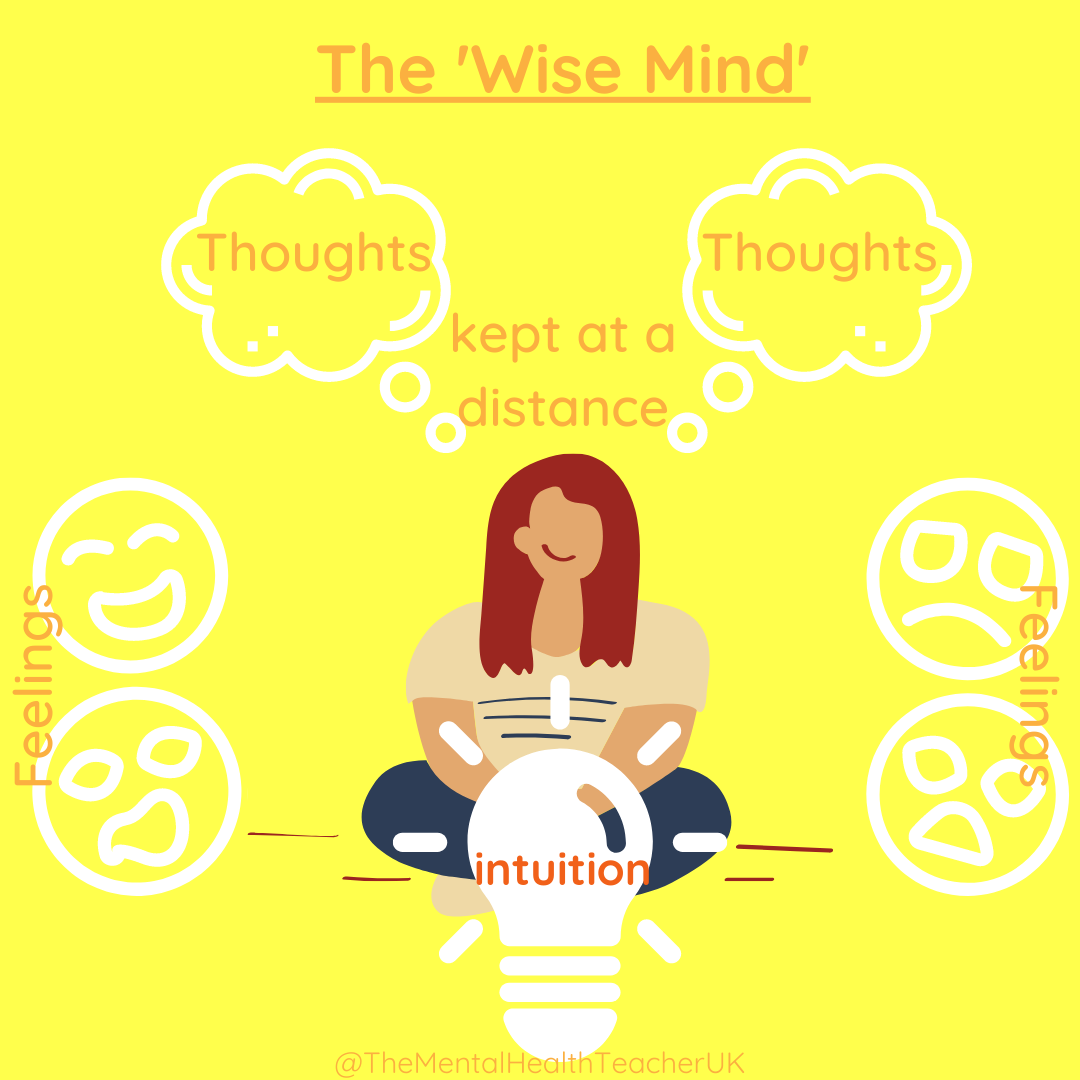
In my Master’s lecture this week (I study Child & Adolescent Mental Health – level 7), we were shown this slide and it got me thinking:

On the surface our lecturer was showing that mindfulness is a relaxation tool to use to improve mental well being but I was hooked on the Venn diagram.
The ‘Reasonable Mind’ is our thinking brain for logic and reasoning and is focused on tasks, facts and statistics. This is our prefrontal-cortex and is the part of the brain that we traditionally use for thinking.
The ‘Emotional Mind’ is our limbic system. This is when our actions are governed solely by our emotions. The stronger the emotion, the less we think, we simply react without thinking about the consequences.
Both parts of our brain are very important and useful in different situations. For example, the ‘Rational Mind’ will be used when we are working or handling data and the ‘Emotional Mind’ when we are with our loved ones; but most of the time, we won’t benefit if we are using one or the other.
Let’s discuss a situation.
If you argue with your partner and are in the ‘Emotional Mind’, you may scream and shout, say things you’ll later regret and suggest that you’re better apart. You’re saying things to try and hurt your partner as much as you’re hurting inside but you’re not taking into consideration how you may feel tomorrow when you’ve calmed down. Do you really want to break up?
If you were in the ‘Rational Mind’ when you had the argument, you may suggest that each of you take it in turns to explain your point of view, then you may write a list of pros and cons and work out a solution that way but what about how you feel? With the rational mind, this doesn’t come into consideration. Using just the ‘Emotional Mind’ is like following your heart and we know that in love, nothing is rational!
So it is not great to use either mind by itself. When we combine the skill sets of both parts of our brain, this is where we connect the ‘Wise Mind’.
The ‘Wise Mind’ is reached by being MINDFUL. To do this, we are aware of our thoughts (rational) and aware of our feelings (emotional) but we distance ourselves from them. We know that not all our thoughts are true and that our feelings are derived from them. We can take a step back and let some false thoughts pass on by. We release them and let them go. In turn, this releases negative emotions that were linked to those thoughts.
In this space or peace, we can start to ‘hear’ or ‘feel’ our intuition/our gut feeling/our inner knowing.

So as we are more mindful and aware of what is going on inside ourselves (thoughts and feelings) and can let things go, we can connect more to our true selves.
When making decisions, it is always best to go with your ‘gut feeling’. This is your intuition telling you what is best for you. It may not be what will bring the best emotions or it may not be what has the most ticks on your spreadsheet, but your body knows what is best for YOU.
If you want to connect more with your body and be more mindful, then my short relaxation videos for calm, focus and mental wellness are on YouTube. My channel is ‘The Mental Health Teacher’ and teachers, you can learn the skills alongside your pupils!
https://www.youtube.com/channel/UCFmUuRhirRUPRtROX0KiQcw

The ‘Wise Mind’ is a core dialectical behaviour therapy (DBT) mindfulness skill, coined by Linnehan (1993).

